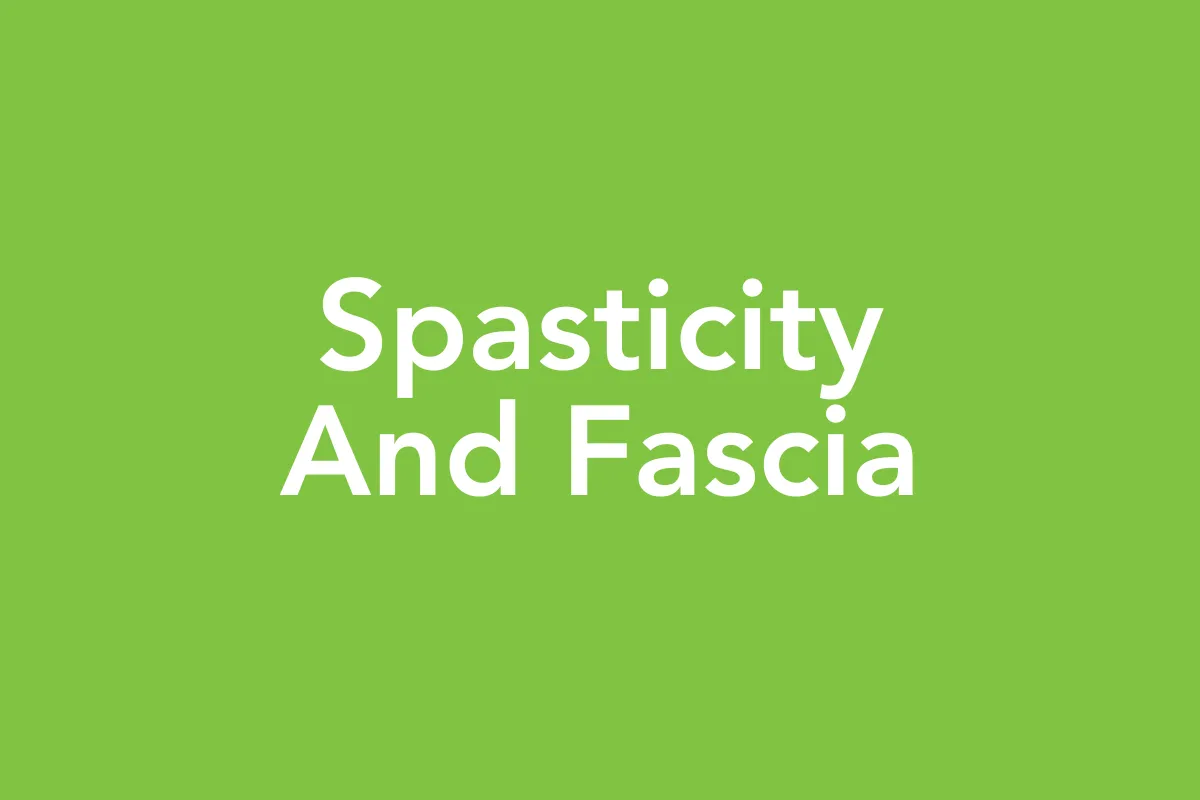
Post 4: Spasticity and Fascia: A New Way to Support Your Child with CP
Reframing Spasticity: A Fascia-Focused Approach to Supporting Children with Cerebral Palsy
"If fascia is not supporting your child's body, muscle tone comes to the rescue. Tight muscles are not the villains, but the heroes bringing stability."
By Mariana, Founder of WeFlow Fascia Therapy
If your child has tight muscles, you're not alone. But what if there’s a different way to understand—and support—them?
When parents hear the word spasticity, it often comes with a wave of overwhelm. Spasticity is usually explained as a result of brain injury: the nervous system sends confused signals to the muscles, which then become overly tight, making movement difficult.
From this traditional lens, spasticity is seen as a neurological “problem” that needs to be fixed or managed. Parents are often told to stretch tight muscles, use orthotics, or even consider injections or surgery. But what if we looked at spasticity differently?
What If Spasticity Isn’t the Enemy?
At WeFlow, we offer a different perspective—one that brings more hope, more clarity, and more possibility.
We look at spasticity through the lens of fascia and a concept called biotensegrity.
Fascia is the connective tissue that surrounds and links every structure in the body. It gives form, support, and fluidity.
Biotensegrity is a model that helps us understand how the body holds itself up and moves. In the simplest terms, it describes how our bodies are organized through a balance of tension and compression. Imagine a tent: the ropes (representing fascia) create tension, and the poles (representing bones) handle compression. When the ropes are adjusted just right, the tent stands tall and balanced.

Of course, this is a simplified way to explain a very complex and dynamic system. But it helps us picture how the fascia plays a key role in holding everything together and supporting movement with minimal effort.
Now imagine your child’s body doesn’t have enough of that healthy tensional balance. What will it do? It will recruit the only system it has: muscle tone. The muscles become tuning pegs, tightening up to create the support the fascia isn’t providing.
Why Tone Often Shows Up When Your Child Moves (or Talks)
Here’s a situation we hear all the time:
“When my child is relaxed, the body feels soft and the tone seems normal. But the moment they try to move—or even speak—the muscles tighten up instantly.”
This is not unusual. In fact, it makes total sense when you understand biotensegrity.
Movement requires support. Talking, sitting up, reaching for a toy—all of these actions ask the body to organize itself quickly and efficiently. If the fascia isn’t providing that internal support, the body will default to muscle tension to get the job done.
In other words, your child isn’t being “spastic.” They’re being smart—doing what their body needs to feel stable enough to function.
The Shift: From Controlling Spasticity to Supporting Fascia
Instead of fighting spasticity, what if we helped the fascia do its job better?
With WeFlow, we teach parents gentle routines that support fascia remodeling. When the fascia is nourished, hydrated, and given the right kinds of movement, it gets stronger. It begins to provide the structural support your child needs—so the muscles don’t have to overwork.
Over time, families report that their children move more easily, with less tension and more confidence. Not because we stretched or forced the muscles—but because we supported the internal architecture of the body.
A New Lens Brings New Possibility
Spasticity isn’t something your child is doing wrong. It’s the body doing its best in a system that needs more support. By focusing on fascia, we support the whole system—not just a symptom.
This shift changes everything.
You go from managing tight muscles... to building strong foundations.
You go from fighting your child’s body... to working with it.
And that, we believe, is where real healing begins.
WeFlow’s Tip for You
If your child gets tight when trying to move or speak, try this: support their torso with your hands or a soft wrap. That little bit of added tension might help them relax and move more freely.
🎥 Learn the first fascia therapy exercise to support your child’s torso here.
Ready to Start?
Take your first step into fascia therapy with our short, parent-friendly workshop:
The #1 Fascia Therapy To Improve Torso Control
Gentle, effective, and easy to begin—no experience needed.
Want to Go Deeper?
If you’re ready to fully embrace this gentle approach and receive personalized support, apply for TheraParent Coaching—our therapeutic coaching program designed for dedicated parents like you.
Includes weekly calls, a tailored plan, and a supportive community.
Apply here – it’s free to explore.
Stay connected and inspired every week.
Subscribe to our weekly blog updates and receive new posts, encouragement, and fascia therapy tips right in your inbox. So never miss the support and ideas that can make a difference in your journey.
